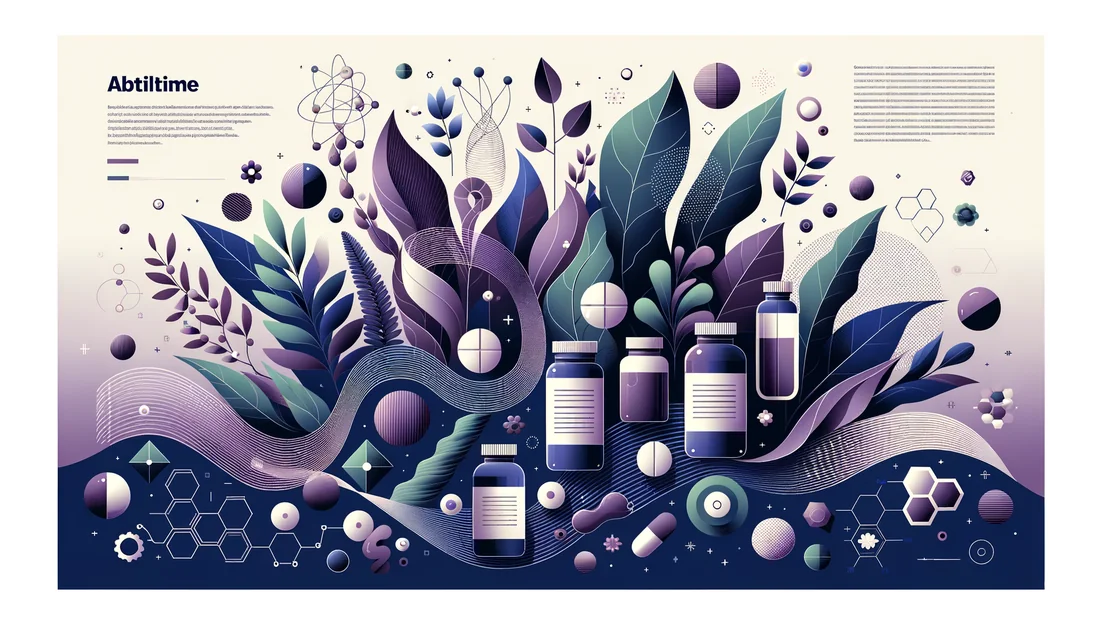
Top 10 Evidence-Based Recommendations
Most lists recycle anecdotes. We screened human trials and systematic reviews on histamine intolerance and closely related, histamine-driven conditions (urticaria, migraine, rhinitis), prioritized RCTs, effect size, and practicality—then ranked what actually moves symptoms. No affiliate fluff—just doses and receipts.
Quick Reference Card
DAO enzyme: 10–30k HDU before meals
Quercetin phytosome: 200–500 mg/day
Vitamin C: 500–2,000 mg/day (2 g pre-trigger)
Luteolin (liposomal): 100–300 mg/day
Perilla (rosmarinic acid): 200 mg/day
Low-histamine probiotics (strain-specific)
Show all 10 supplements...
Stinging nettle: 300–600 mg/day
Nigella sativa oil: 250–500 mg BID
Low-histamine diet: 2–4 week reset
Combo stack: DAO + C + quercetin
Ranked Recommendations
#1Diamine Oxidase (DAO) enzymeTop Choice
Your "pre-meal histamine garbage disposal."
Dose: 10,000–30,000 HDU (≈0.3–0.9 mg DAO) 10–15 minutes before meals, up to 2–3 times/day.
Time to Effect: First dose (for food-triggered symptoms).
How It Works
Evidence
- RCT (crossover) in chronic spontaneous urticaria inadequately controlled on antihistamines: DAO add-on reduced UAS-7 in patients with low DAO vs placebo (mean −3.8; p=0.041). [2]
- RCT in DAO-deficient episodic migraine: 1 month DAO reduced hours of pain per attack (−1.4 h; p=0.0217) vs baseline, trend vs placebo. No notable AEs. [1]
- Open-label HIT pilot (n=28): 4 weeks DAO before meals significantly improved all HIT symptom domains; scores worsened after stopping. [3]
- 2024 trial protocol (n=400) will test low-histamine diet ± DAO—reflects growing clinical adoption. [4] Net: Best immediate symptom impact for food-triggered HIT with favorable safety. [1] [2] [3] [4]
Clear food-triggered reactions (leftovers, fermented/aged foods, wine); known low DAO.
Porcine sources—avoid if pork allergy/restrictions. Plant/vegan DAO exist but lack clinical data. [18]
Treat DAO like a timed digestive enzyme: take just before histamine-risk meals; pair with a low-histamine diet for 2–4 weeks, then re-test tolerance. [18]
#2Quercetin (prefer Phytosome or other enhanced-bioavailability forms)Strong Alternative
Nature's mast-cell brake—works better when it actually absorbs.
Dose: 200–500 mg/day (as quercetin phytosome); higher plain quercetin often under-absorbed.
Time to Effect: 1–4 weeks (faster for some).
How It Works
Evidence
- RCT (n=66) using quercetin phytosome 200 mg/day for 4 weeks improved multiple rhinitis symptom/QoL scores vs placebo. [6]
- In vitro/human pilot data show quercetin blocks mast-cell mediators more effectively than cromolyn in some assays; small open-label skin pilots positive. [10]
- 2024 meta-analysis of human studies: delivery tech (lecithin phytosome, cyclodextrin, SEDDS) dramatically improves quercetin bioavailability (up to 62×; phytosome ~20×). [7] Net: Strong mechanistic rationale plus human symptom improvement when formulated for absorption. [6] [7] [10]
People with flushing, rhinitis, or hives from mast-cell activation; those who can wait a few weeks.
May interact with some drugs via transporters/enzymes; stop 1 week before surgery due to theoretical platelet effects.
#3Vitamin C (ascorbic acid)Worth Considering
Cheap, fast, and surprisingly antihistamine.
Dose: 500–2,000 mg/day divided; 2,000 mg 1 hour pre-exposure used in an RCT.
Time to Effect: Hours to days.
How It Works
Evidence
- Double-blind crossover RCT (n=70) with 2 g vitamin C 1 h pre-exposure: fewer severe symptoms; histamine rose with motion but DAO increased more after vitamin C (p<0.001). [12]
- RCT (2025) found small, non-significant reduction in histamine wheal response with short-term C; suggests potential but modest effect. [15]
- Older depletion/repletion human data link low C with elevated histamine. [16] Net: Safe, inexpensive adjunct that can blunt histamine-driven symptoms quickly for many. [12] [15] [16]
Budget-friendly first step; acute flares; combining with quercetin/DAO.
2 g/day can cause GI upset; kidney stone risk in predisposed individuals.
If you "feel it" fast, keep a 1–2 g dose reserved for high-risk meals/events; daily maintenance 500–1,000 mg often suffices. [12]
#4Luteolin (prefer liposomal or complexed forms)
The sleeper mast-cell stabilizer that can beat cromolyn in vitro.
Dose: 100–300 mg/day (supplement forms vary; start low).
Time to Effect: 1–4 weeks.
How It Works
Evidence
- 2024 human mast-cell study: luteolin more potent than cromolyn at blocking histamine/mediator release. [5]
- Methoxy-luteolin inhibits neuropeptide-triggered mast-cell inflammation via mTOR in human cells. [21] Net: Human-cell data are strong; clinical trials are emerging—use as a quercetin alternative/adjunct when mast-cell symptoms dominate. [5] [21]
Mast-cell–heavy presentations (flushing, itching, brain fog with triggers).
Sparse human RCTs; start low if sensitive.
Look for liposomal or phospholipid complexes; some combine luteolin with quercetin for broader mediator control. [5]
#5Perilla (rosmarinic acid–rich extract)
Plant polyphenol that cools nasal histamine chemistry.
Dose: 200 mg/day rosmarinic-acid–rich perilla extract for 21 days.
Time to Effect: 1–3 weeks.
How It Works
Rosmarinic acid dampens eosinophil/neutrophil infiltration and reduces histamine and cytokines locally. [9]
Evidence
Itchy/watery eyes, sneezing, nasal symptoms with pollen/food co-triggers.
Check for mint family sensitivities.
#6Targeted "low-histamine" probiotics (strain-specific)
Not all probiotics help—pick strains that don't make histamine.
Dose: Follow label CFU; use strains studied for allergy or histamine degradation for 8–12 weeks.
Time to Effect: 4–8 weeks.
How It Works
Evidence
- 2024 RCT: multi-strain (L. acidophilus, L. rhamnosus, B. breve, B. longum) improved rhinitis QoL vs placebo and shifted microbiota toward anti-inflammatory taxa. [19] [20]
- In vitro: L. plantarum LP115 increased epithelial DAO secretion; histamine-degrading L. plantarum strains identified. [17] [22]
- Meta-analysis: probiotics offer small improvements in AR, strain-dependent; LGG not consistently effective. [21] Net: Potential adjunct if you choose strains wisely; avoid histamine-producing species. [19] [20] [21] [22]
Chronic GI + nasal symptoms with suspected dysbiosis.
Some lactobacilli produce histamine—don't use generic blends without strain info.
#7Stinging nettle (Urtica dioica)
Old-school herb with modest antihistamine effects.
Dose: 300–600 mg/day freeze-dried leaf for 1–4 weeks.
Time to Effect: Days to weeks.
Evidence
Itchy/sneezy types wanting a gentle add-on.
Possible interactions with diuretics/anticoagulants.
Use standardized leaf; root extracts target different issues.
#8Nigella sativa (black seed oil, thymoquinone-standardized)
Anti-allergic spice oil with growing human data.
Dose: 250–500 mg oil twice daily for 2–12 weeks (some trials add piperine).
Time to Effect: 1–3 weeks.
How It Works
Evidence
Seasonal/indoor allergy overlay with HIT.
May lower BP or affect CYPs at high doses; choose reputable brands.
Use standardized thymoquinone content; consider with perilla or quercetin for synergy.
#9Low-histamine diet (foundation, not a pill)
The "supplement" your gut actually notices first.
Dose: N/A—food protocol 2–4 weeks, then re-challenge.
Time to Effect: Days to 2 weeks.
How It Works
Evidence
Everyone with suspected HIT, especially with leftovers/fermented food triggers.
Risk of over-restriction—reintroduce after a short reset.
Prioritize freshness; chill leftovers fast; avoid prolonged slow-cook holds; trial 2–4 weeks then test tolerance. [27]
#10Stack assist: Vitamin C + quercetin (enhanced) + DAO
Fast relief + mast-cell control + pre-meal protection.
Dose: DAO 10–30k HDU pre-meal; quercetin phytosome 200–500 mg/day; vitamin C 500–1,000 mg/day (plus 1–2 g before known triggers).
Time to Effect: DAO now; C within hours; quercetin within weeks.
How It Works
Evidence
Moderate–severe HIT with both food and mast-cell features.
Mind pill burden; check interactions.
Common Questions
What's the fastest-acting supplement for histamine intolerance?
DAO is fastest for food-triggered reactions (take before meals). Vitamin C can help within hours; quercetin/luteolin need weeks. [1] [2] [12]
What dose of DAO actually works?
Aim for 10–30k HDU per meal (≈0.3–0.9 mg), 10–15 minutes before eating; 2–3 times/day during a 2–4 week reset. [3] [18]
Do I need a vegan DAO?
Most clinical data are with porcine DAO; plant/microbial DAO lack human trials, so efficacy is less certain. [18]
Which probiotics are 'low-histamine'?
Choose strain-specific products (e.g., L. plantarum, Bifidobacterium longum mixes used in RCTs). Avoid generic lactobacillus blends without strain IDs. [19] [20] [21]
Can supplements replace a low-histamine diet?
No. Use diet for 2–4 weeks to lower load; DAO protects during meals; reintroduce foods methodically. [4] [14]
Is histamine intolerance curable?
Often it's manageable—by lowering dietary load, supporting gut health, and stabilizing mast cells. Large RCTs are underway. [4]
Timeline Expectations
Fast Results
- •
DAO before meals
- •
Vitamin C 1–2 g before known triggers
- •
Quercetin phytosome 200–500 mg/day
Gradual Benefits
- •
Quercetin (enhanced forms)
- •
Luteolin (liposomal)
- •
Probiotics (strain-specific 8–12 weeks)
Combination Strategies
The Eat-Anything (Almost) Stack
Components:DAO + Vitamin C + Quercetin (enhanced)
DAO blocks dietary histamine absorption; vitamin C provides acute antihistamine support; quercetin stabilizes mast cells longer-term. Evidence for each from human trials. [1] [2] [3] [6] [7] [12]
• 10–30k HDU DAO 10–15 min before high-histamine meals • Vitamin C 500 mg with breakfast and dinner; optional 1–2 g 60 min before a known trigger • Quercetin phytosome 200–500 mg with a main meal daily for 4 weeks
Calm the Mast Cells Stack
Components:Quercetin (enhanced) + Luteolin (liposomal) + Perilla (rosmarinic acid)
Targets mast-cell mediator release from multiple angles; luteolin shows higher potency in human mast cells; perilla reduces nasal inflammatory cells in RCT. [5] [6] [9] [10]
• Quercetin phytosome 200–500 mg/day with food • Luteolin 100–200 mg/day (liposomal) • Perilla extract 200 mg/day for 3–4 weeks
Gut-First Reset
Components:Low-histamine diet + DAO (short term) + Targeted probiotics
Diet reduces load; DAO protects during reintroduction; specific strains may support histamine handling and dysbiosis. [4] [14] [17] [19] [20]
• 2–4 weeks low-histamine diet • DAO 10–20k HDU before main meals during the reset • Start a strain-specific probiotic daily for 8 weeks; reassess
You might also like
Explore more of our evidence-led investigations, comparisons, and guides across every article style.

Jarrow Formulas
Jarrow Formulas: Probiotic testing leader inside a conventional transparency playbook



L-Glutathione
A Cambridge biochemist peered into animal tissues in 1921 and pulled out a mystery: a tiny three-part molecule that kept cells from rusting. He called it glutathione. A century later, health-conscious people are swallowing, sipping, and even spraying that same molecule—hoping to fortify their inner defenses.


Tocotrienols
The stealthier cousins of vitamin E—built with springy tails that move differently in cell membranes and behave differently in your body.












